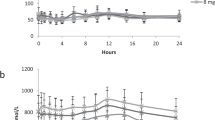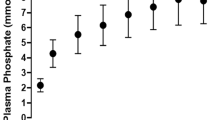Abstract
THERE has been much controversy about our claim1 that D-glutamic acid is a constituent of tumour proteins. Many authors were unable to confirm our results, and in their opinion the D-form which we isolated from malignant tumours Was formed by partial racemization in vitro during the hydrolysis with hydrochloric acid. An explanation of these contradictory results will be given in future publications. Here we wish to record further evidence for the correctness of our views.
This is a preview of subscription content, access via your institution
Access options
Subscribe to this journal
Receive 51 print issues and online access
$199.00 per year
only $3.90 per issue
Buy this article
- Purchase on Springer Link
- Instant access to full article PDF
Prices may be subject to local taxes which are calculated during checkout
Similar content being viewed by others
References
Kögl, F., and Erxleben, H., Z. physiol. Chem., 258, 57 (1939) (1 Mitteilung). Kögl, F., Erxleben, H., and van Veersen, G. J., ibid., 277, 251 (1943) (9 Mitteilung).
Kögl, F., and Erxleben, H., Z. physiol. Chem., 264, 108 (1940) (5 Mitteilung).
Neuberg, C., and Kerb, J., Biochem. Z., 40, 498 (1912); 67 119 (1914).
Ratner, S., J. Biol. Chem., 152, iii, 559 (1944).
Shemin, D., and Rittenberg, D., J. Biol. Chem., 151, 507 (1943).
Author information
Authors and Affiliations
Rights and permissions
About this article
Cite this article
KÖGL, F., BARENDREGT, T. & KLEIN, A. Excretion of D-Pyrrolidone Carboxylic Acid by Rat and Dog Fed with Tumour Proteins. Nature 162, 732–733 (1948). https://doi.org/10.1038/162732b0
Issue Date:
DOI: https://doi.org/10.1038/162732b0
This article is cited by
-
Metabolism and the Occurrence of d(−)Glutamic Acid in Tumour Proteins
Nature (1954)
-
Chemische und biochemische Untersuchungen über Tumorproteine
Experientia (1949)
Comments
By submitting a comment you agree to abide by our Terms and Community Guidelines. If you find something abusive or that does not comply with our terms or guidelines please flag it as inappropriate.



